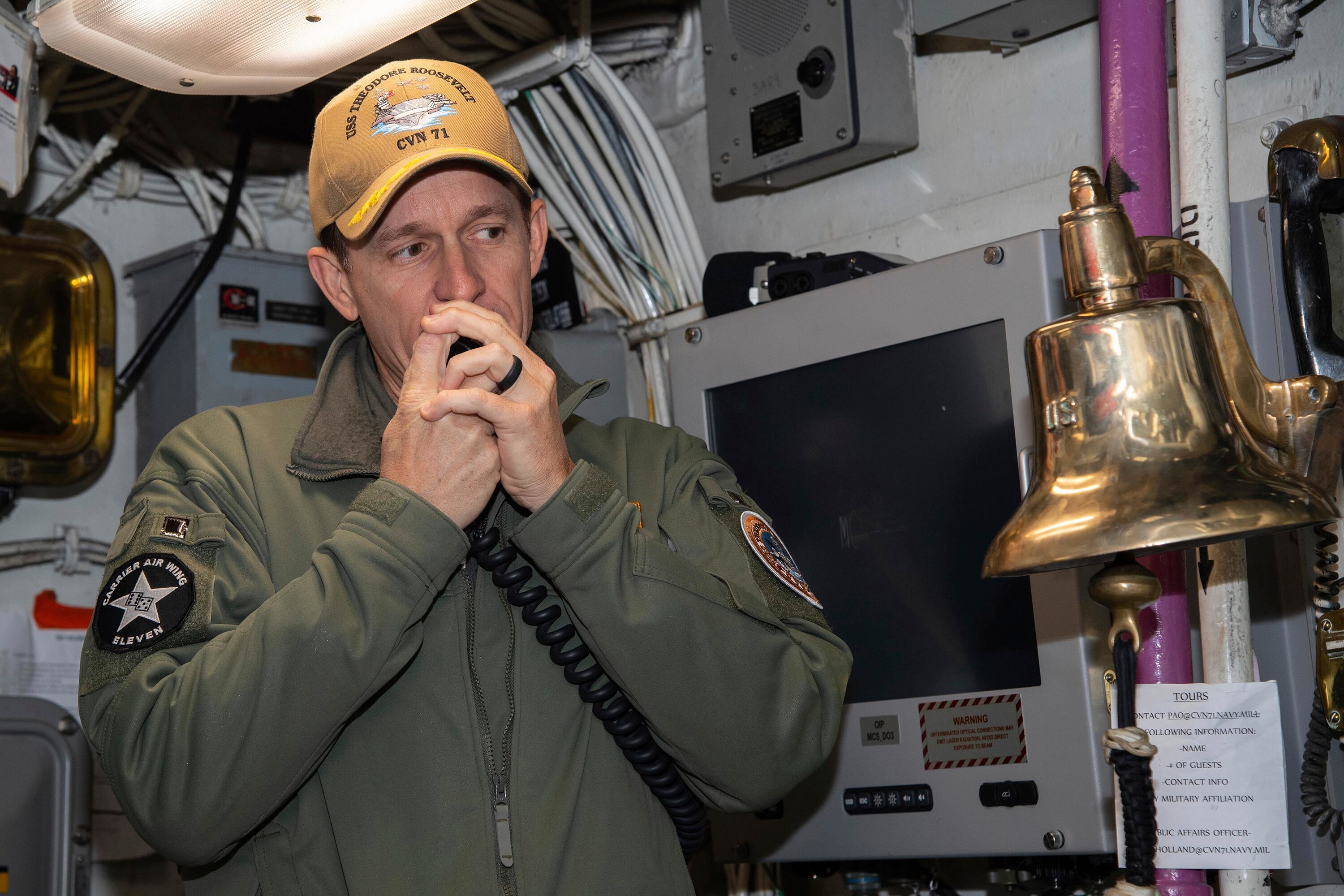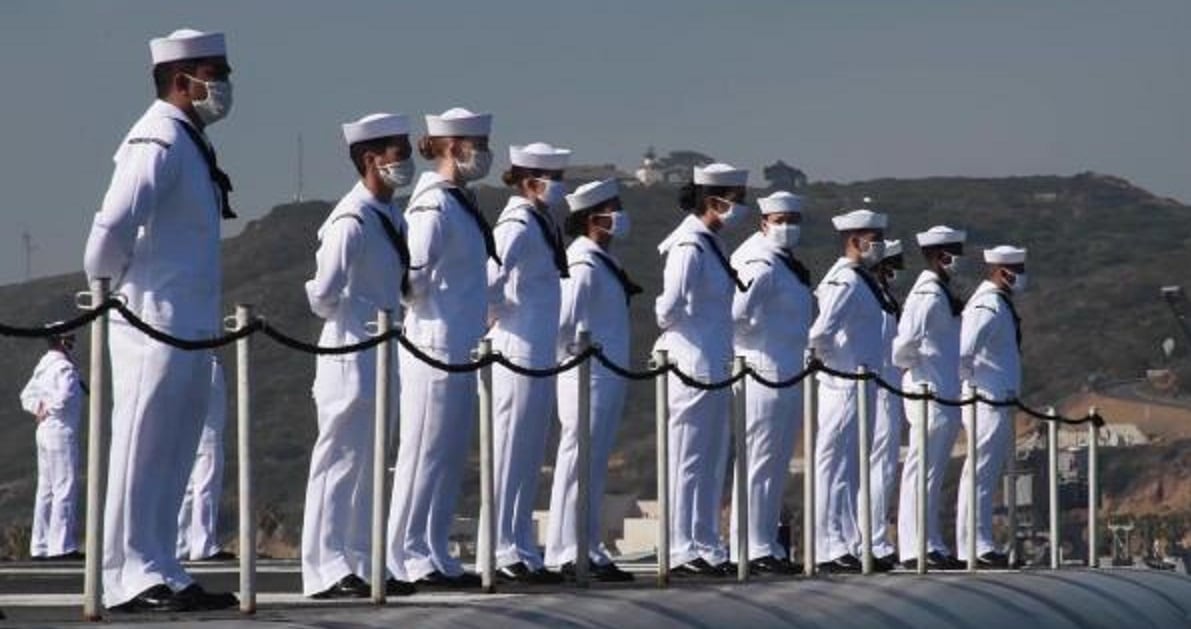San Diego — The aircraft carrier Theodore Roosevelt returned home to San Diego Thursday, led by a new captain who came aboard after the previous commanding officer was fired over the handling of a massive COVID-19 outbreak on board.
There were no emotional embraces on the Navy pier typical of such homecomings when sailors return after months at sea.
Instead, the crew. wearing face coverings, disembarked one by one and walked to waiting vehicles to prevent the spread of the coronavirus, marking a quiet and sterile end to one of the Navy’s most tumultuous non-combat deployments.
“It was a sombering feeling seeing that we didn’t have our families out here after we’ve gone for so long,” Air Traffic Controller 1st Class Daniel Adam Wright told San Diego media, according to NBC-7 San Diego.
The aircraft carrier departed in January with 4,800 crew members. In late March for a deployment to U.S. 7th Fleet, But it pulled into the port at Guam amid a rapidly escalating COVID-19 outbreak. It remained there for 10 weeks as the ship was sanitized and sailors were taken off to be quarantined, treated or tested. Over time, more than 1,150 crew members tested positive for the coronavirus and one sailor died.
Early on, Capt. Brett Crozier urged his superiors to take faster action to stem the spread of the virus, but was removed from his command when his letter was leaked to the San Francisco Chronicle. Then-acting Navy Secretary Thomas Modly, who made a special trip to the carrier and scolded the crew for cheering Crozier as he departed the ship. After harsh criticism of his remarks, in which he accused Crozier of being either “too naive or too stupid to be a commanding officer of a ship like this,” and after lawmakers in the House Armed Services Committee accused Modly of acting irrationally, he resigned.

The Navy opened an investigation, which found Crozier made serious errors in judgment that worsened the problem. The investigation also determined that the likely source of the coronavirus infection was obtained during a port visit in Vietnam in March.
Sailors aboard the returning warship continued to praise their former commander. Wright addressed his former captain directly.
“Sir, if I could say anything to you, it’d be ‘Thank you. Thank you for noticing a problem onboard the ship and a problem that was affecting your crew and thank you for taking the action necessary to get us the assistance required,’” Wright told San Diego media, according to the TV station.

The ship returned to sea June 4, but two weeks later had another mishap when one of its F/A-18F Super Hornets crashed into the Philippine Sea. Its pilot and weapons officer were rescued by helicopter.
The Roosevelt continued on its mission, training on June 21 with the aircraft carrier Nimitz in the Navy’s first dual-carrier exercise in the Western Pacific in three years. Then on July 2, another sailor on board died from an undisclosed medical emergency.
All told, the TR sailed over 31,835 nautical miles to support dual-carrier operations, expeditionary strike force operations, air defense exercises, and joint-service interoperability exercises, according to the Navy.
Capt. Carlos Sardiello, who replaced Crozier on the ship, told reporters in San Diego that he was proud of his crew who faced "unprecedented challenges" but got right back on mission.
“Obviously they’re very excited to get off the ship now,” he said.





